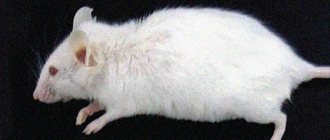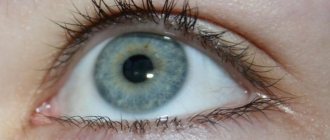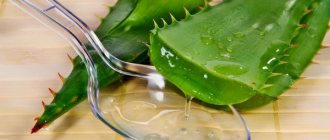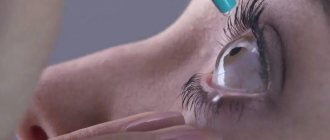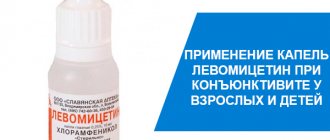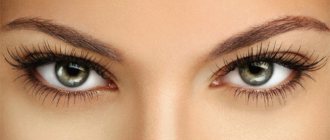Symptoms of the disease
Glaucoma develops for the following reasons: a decrease in the outflow of intraocular moisture or its excessive production. In this regard, the forms of pathology and symptoms differ. If the doctor has diagnosed “open-angle glaucoma,” which occurs due to the iris blocking the angle of the anterior chamber of the eye, then the person often initially simply does not notice the alarming signs, since they are subtle.
In the morning, a white veil appears before the eyes, which dissipates after a few minutes; when looking at a light source (for example, a light bulb), rainbow circles blur around it, and loss of peripheral vision is observed.
With angle-closure glaucoma, the symptoms are very pronounced. The eye suddenly hardens and turns red, the pupil acquires a greenish tint. There is a sharp pain in the superciliary arches, in the temple. When trying to look at the light, a sharp pain pierces the eyes and profuse tearing begins. Such attacks often occur in the evening.
There is also a mixed form of glaucoma, characterized by the presence of symptoms of both forms of eye pathology.
Types of drops
The list of medications for elevated IOP includes several groups. These are means to enhance the outflow of intraocular fluid. These include cholinomimetics (Aceclidine), prostaglandins (Travatan), sympathomimetics (Irifrin).
Drops that reduce the production of intraocular fluid. These are Beta-blockers (Timolol), carbonic anhydrase inhibitors (Trusopt). And combination drugs (Azarga).
The following table shows the main characteristics of each group of drugs.
| Group of medications. | How they act. |
| Beta blockers. | Inhibits the production of intraocular fluid. |
| Carbonic anhydrase inhibitors. | They inhibit the production of carbonic anhydrase, an enzyme produced by the ciliary body of the eye to produce intraocular moisture. |
| Sympathomimetics. | They enhance the circulation of intraocular fluid by influencing the sympathetic nervous system. |
| Cholinomimetics. | They reduce intraocular pressure (ophthalmotonus) and normalize the outflow of fluid from the eyes by opening the angle of the anterior chamber of the eye. |
| Prostaglandins. | The functioning of the eye drainage system improves, and the fluid begins to drain normally. The action of prostaglandins lasts all day, which significantly distinguishes them from other drops for glaucoma. |
A separate group includes combined medicinal drops, which are prescribed when monotherapy does not help.
Drops that reduce intraocular pressure
There are a lot of drops that reduce intraocular pressure, some of them are presented below:
- Xalatan;
- Betoptik;
- Fotil;
- Thiomol;
- Travatan;
- Arutimol.
These and other drugs for intraocular pressure will be discussed in more detail below.
Indications for use
Drops to lower eye pressure are prescribed when changes in pressure have a negative impact on eye health. In all other cases, you can limit yourself to correcting your diet and stopping spending long periods of time in front of a computer monitor.
All drops are prescribed exclusively by ophthalmologists, since each drug has its own indications and contraindications.
Contraindications
Ophthalmic drops that lower intraocular pressure are prohibited from being used in the following cases:
- sinus type bradycardia;
- individual negative reaction to the components of the drops;
- exacerbation of bronchial asthma;
- chronic lung pathologies;
- cardiogenic shock;
- retinal detachment or the possibility of such a pathology.
Reference! Eye drops that lower eye pressure are not recommended for use after surgical interventions on the organs of vision.
Possible side effects
Adverse reactions of the body are very individual, and are often a reaction to the components of the drug. The following manifestations are possible:
- Cholinomimetics - this group of drugs constricts the pupil, which can lead to a burning sensation and the appearance of hazy vision.
- Sympathomimetics - possible changes in blood pressure, heart rhythm disturbances, redness of the eyes.
- Prostaglandins – can cause burning and redness of the eye.
Most often, after using the drops, the patient experiences a burning sensation, which goes away on its own after a certain time. If the burning sensation bothers you for a long time, and other side effects are observed, you should consult a doctor to change the drug.
Use during pregnancy
During pregnancy, it is best to use “artificial tears”, which effectively relieve dry eyes and relieve unpleasant symptoms. In the first trimester, it is advisable to completely stop using medications. If it is impossible to do without this, then the use of an alpha receptor agonist in a minimum concentration - Brimonidine - is allowed.
In the second trimester, in addition to Brimonidine, prostaglandins and beta blockers can be used, but in this case, monitoring the child’s condition is necessary, especially the heart rate.
In the third trimester, carbonic anhydrase inhibitors are prescribed, but beta blockers, prostaglandins and brimonidine should be used with extreme caution, as they can provoke premature labor.
In order to slow down the absorption of drugs and reduce their systemic effect, you can use the nasolacriminal compress method - when using drops, you need to press on the lower lacrimal punctum for a while.
List of the most popular drops
The choice of eye drops for glaucoma is made only by an ophthalmologist after a thorough diagnosis and identification of the cause of the disease. But a patient who has been diagnosed with glaucoma needs to know which medications can be used against it and which cannot, and navigate through numerous medications.
The best eye drops for glaucoma that reduce the production of intraocular moisture are as follows:
- Timolol . Good drops against glaucoma. The product blocks special receptors in the ciliary body of the eye, where moisture is produced. As a result, IOP is quickly and effectively reduced. The drug is inexpensive, its cost is approximately 20-40 rubles. The disadvantages include the inability to use for pathologies of the lungs, heart, low blood pressure, arrhythmia, and asthma. An analogue is Metipranolol, which does not contain preservatives.
- Azopt, Brinzopt.
These eye medications contain brinzolamide as the basis. This substance slows down the enzyme caronehydrase, which helps increase the amount of moisture inside the eye. - Betaxolol. One of the most effective drops. The active substance can be contained in quantities of 2, 5 mg and 5 mg. Disadvantages include discomfort after instillation in the form of burning and lacrimation.
- Xalatan (latanoprost).
The active substance of the drug is latoprost. A milliliter of drops contains 500 mcg. A fast-acting and at the same time safe drug, without side effects. Its action is aimed at enhancing the outflow of intraocular moisture. - Pilocarpine. The active substance of the drug is pilocarpine hydrochloride. A drug that has a miotic effect (constricts the pupil), due to which the anterior chamber of the eye is released, and the intraocular fluid can circulate normally. The product should not be used for inflammation of the eye structures or in the presence of diseases when pupil constriction is undesirable.
- Travatan. The active substance of these drops is travoprost. Strengthens the outflow of fluid accumulating between the cornea and lens.
- Aceclidine. An effective remedy for reducing intraocular pressure. The disadvantages include many side effects (inflammation of the iris, redness of the conjunctiva). Only a doctor prescribes it.
- Mexidol. The best remedy for glaucoma for old people. Indicated in the treatment of senile glaucoma associated with degenerative changes in the ocular structures. The disadvantages include the low effectiveness of the drug. The pressure in the eye does not decrease much, but after its use the angle of peripheral vision increases significantly.
- Irifrin. The active ingredient phenylephrine reduces eye pressure without affecting the accommodative apparatus, which is responsible for optimal distance and near vision. The disadvantage is a large number of contraindications. These are diabetes, hypertension, heart pathologies.
As a supplement to drops in the treatment of glaucoma, Tanakan is used, a plant-based drug that contains extract of Ginko biloba leaves. Available in tablets and as a solution for oral administration. According to reviews, after use there is an improvement in vision. Tanakan normalizes metabolic processes in the eye structures, dilates small arteries, reduces the permeability of vascular walls, and increases the tone of the veins.
Principles of therapy for acute angle-closure attacks
An acute attack of angle-closure glaucoma is an emergency that requires emergency medical care.
If intraocular pressure (IOP), which during the development of an attack can reach values of 40-60 mm Hg. Art. and no longer decrease to normal values during the first 24 hours, the prognosis for visual functions can be very dismal. The eye is in danger of permanent loss of vision!
Therefore, the main goal during the development of an acute attack is to reduce intraocular pressure (IOP). For this purpose, the following is carried out:
- Drug therapy:
It is necessary to immediately begin instillation of the miotic - 1% pilocarpine solution. The following scheme is used: during the first 2 hours, 1 drop of the drug is instilled every 15 minutes, over the next 2 hours - every 30 minutes, over the next 2 hours - 1 time per hour.
Next, the drug is used 3-6 times a day, depending on the degree of reduction in intraocular pressure (IOP). A similar scheme is used if the test result for pilocarpine is positive (constriction of the pupil with one or two instillations of the drug).
If there is no pupil reaction due to iris ischemia, continuing treatment with pilocarpine is impractical and even dangerous. In addition to miotic instillation, a 0.5% timolol solution is instilled, 1 drop 2 times a day.
Acetazolamide (diacarb) is prescribed orally at 0.25-0.5 g 2-3 times a day. In addition to systemic carbonic anhydrase inhibitors, you can use a 2% solution of dorzolamide (trusopt) 3 times a day or a 1% suspension of brinzolamide (azopt) 2 times a day.
Osmotic diuretics are used orally or intravenously (the most commonly used is a 50% glycerin solution at a dose of 1.5-2 g/kg). If the pressure decreases insufficiently, loop diuretics (furosemide 20-40 mg) can be used intramuscularly or intravenously.
If, despite the therapy, intraocular pressure (IOP) does not decrease, a “lytic mixture” is injected intramuscularly: 1-2 ml of a 2.5% solution of aminazine, 1 ml of a 2% solution of diphenhydramine or 2 ml (50 mg) of promethazine (“pipolfen”) "), 1 ml of 2% promedol solution.
After administration of the mixture, bed rest should be observed for 3-4 hours due to the possibility of developing orthostatic collapse (a sharp drop in blood pressure).
- Distraction therapy:
Hot foot baths, saline laxatives, cupping, mustard plasters, leeches on the temple area (carried out simultaneously with drug therapy).
- In order to remove the resulting block and normalize the outflow of intraocular fluid (IOH) from the posterior chamber to the anterior chamber (i.e., to relieve, stop the attack), as well as to prevent the development of repeated attacks, laser iridectomy (iridotomy) is mandatory in both eyes.
- If the attack cannot be stopped within the first day, surgical intervention (basal iridectomy) is indicated.
Combination drugs for glaucoma
Sometimes it is advisable to use combination drugs that consist of components of different pharmacological groups. They are characterized by enhanced action, since both active substances enhance the effect of each other.
Among the combination drugs, the following should be noted:
- Fotil, Timpilo. The drug contains timolol maleate and pilocarpine (two or four percent).
- Xalacom. Contains 2 active components – latanoprost and timolol maleate.
- Azarga.
Good drops for eye pressure. The medicine is used for open-angle glaucoma, if monotherapy is not enough. The active ingredients are timolol and brinzolamide. - Combigan. The composition contains brimonidine and timolol maleate. Both components slow down the production of moisture and help reduce pressure in the eye structures.
People with glaucoma should know that there is a list of names of drugs whose use is strictly contraindicated for them. These are mainly mydriatics, that is, drugs that dilate the pupil. Such medications include Vizofrin, Midrimax, Atropine. They are not recommended for use in patients with glaucoma.
Instillation rules
How to apply eye drops correctly? The procedure for putting drops into the eyes is quite simple, but it is still worth remembering a few important rules:
- You should wash your hands before instillation;
- you need to look up, pull back the lower eyelid and drip the medicine without touching the eyelashes or mucous membrane of the eye with the pipette;
- drop 2 drops into each eye. There is no need to be afraid of an overdose; only 10-15% of the medicine gets into the eye;
- after instillation, you need to apply a little pressure with your fingertips on the inner corners of the eyes, otherwise the solution will go into the lacrimal canaliculi and then into the nasopharynx;
- You need to sit with your head thrown back for a couple of minutes so that the medicine penetrates the tissue.
These simple rules will help you make the most of your medicine.
How to use eye drops correctly
Prevention
There are a large number of drops that help slow the progression of glaucoma and prevent its recurrence. Most antiglaucoma drops are used to prevent pathology. The number of installations is only decreasing.
The following drops are in great demand to prevent increased IOP:
- Betoptik. The main component of anti-glaucoma drops is betaxolol, which prevents fluid from accumulating in the eye. Well reduces the amount and rate of fluid formation in the eye. Analogues such as Azopt, Xalatan, Timolol, Pilocarpine, Okumed can be used to replace Betoptik. The drug is used both for the treatment and prevention of various types of glaucoma.
- Emoxipin.
Structural analogue of vitamin B6. Drops increase microcirculation of red blood cells in the blood. Shows good effectiveness in the treatment of ophthalmological diseases, including glaucoma. - Taurine. The active substance of the drops is the sulfur-containing amino acid of the same name, which optimizes metabolic processes in eye tissues and restores the functions of cell membranes.
- Taufon.
An analogue of Taurine, the active substance of which is the same amino acid taurine, of which 1 ml of Taufon contains 4 mg.
Consumer Reviews
Elena: At my last appointment with the ophthalmologist, I was diagnosed with early stage glaucoma. The doctor said that it is not advisable to perform surgery at this stage. He recommended conservative treatment with antiglaucoma drops. At first I tried Azopt, but it gave me itching and burning in my eyes. The doctor advised to replace it with Fotil. There are no negative symptoms.
Dmitriy. I have been treating glaucoma with drops for a year now. Cloudiness of the lens and increased intraocular pressure were detected. After several months of using anti-glaucoma medications, the doctor said that the pressure was under control, so she lowered the dosage. Now I have no progression of diseases.
